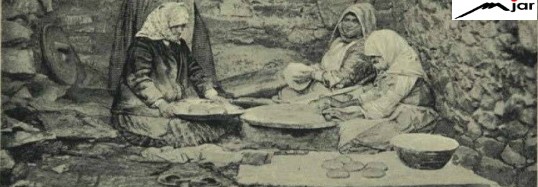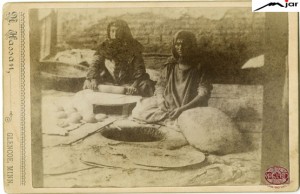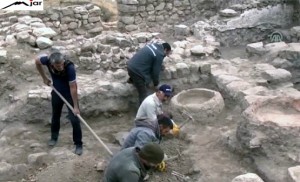
Lavash has been baked in Armenia since the 1st Millennium B.C.: During the Excavations in Artashat there was discovered an Underground Tonir of that Period
Lavash, the Armenian bread, is one of the national treasures of Armenia.
The bread lavash is known in Armenia since the 1st millennium B. C. During the excavations in the Town of Artashat there was discovered an underground tonir of that period, which is considered the first instrument of the Armenian cuisine.
In the basics of the word “lavash” there is laid its way of making: the dough ball is rolled out, opened well and then with skillful hand movements the dough is thrown from one hand to the other by stretching and opening the dough. And here comes the name of lavash-lavqash (stretch well). The bread “matnaqash” (stretched with fingers) also has a similar origin, which means making hole-like ornaments on the dough with fingers.
“If you ever take part in lavash baking ceremony, you’ll agree that it is one of the most interesting and the most difficult ceremonies of the Armenian cuisine”, writes Yaneta Arshakyan.
In the “Etymological Dictionary of the Armenian Inherited Lexicon”, it is mentioned that the word “lavash” comes from the pre-Armenian (Grabar) word law-, which means “flat”. In the Middle Armenian the word lawš already meant “flat thin bread”.
The prevalence of lavash in Armenia is evidenced by the tonirs and remains of lavash left there discovered in the result of archaeological excavations. A piece of burnt lavash was discovered in the beginning of the 20th century in one of the medieval capitals of Armenia – Ani (not far from Gagkashen church). The remains of lavash have been discovered during the excavations of the town, which was carried out by the Russian Archaeological Imperial Union.
Early samples of tonirs in Armenia have been discovered at Lchashen mausoleums of Bronze Era, in Artashat (tonirs of bakers and blacksmiths), in Dvin and in other ancient sites. The most common type has a diameter of 40-60 cm and depth of 1.2-1.5 m. It is used for baking bread (lavash, bokon and so on), cooking, making dairy products and for heating. It was buried in the center of the main house or in a separate building (tonir house), in the ceiling of which there was a garret-window through which the smoke went away.
In order to prevent wetness sometimes tonir was buried in a mound 40-60cm high the house floor and the edges of the tonir were equaled to the mound height. In order to keep the heat for a long time sometimes tonir was covered with 20-25 cm salt or sand layer. To ensure air flow and blow the fire, from the lower part of the tonir there came out to the ground surface a 1.5-3 m long airway made with pipes and slabs. Tonirs were covered with clay or tin lids. The ornate patterns have been discovered in Dvin.
the material is taken from http://slim.am/
translated from Armenian into English by M.Vardanyan













